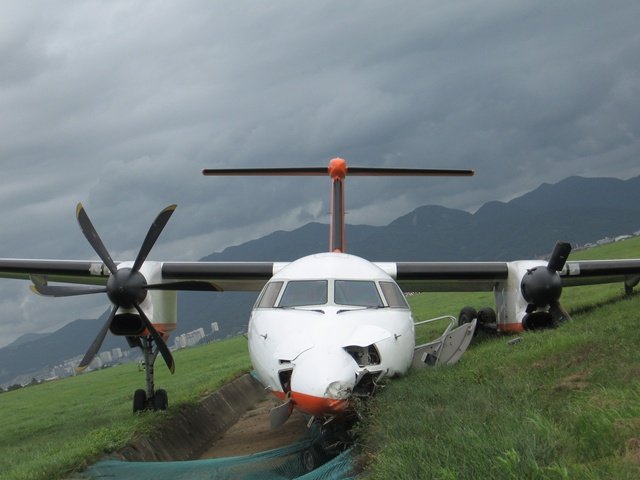Each year, thousands of bird strikes are reported worldwide, posing a persistent danger to flight safety. While most of these incidents result in no harm to passengers, the potential for disaster is always present. Even a small bird can cause significant damage to an aircraft’s engine or other critical components.
BY PC Bureau
The deadly lane crash at Muan International Airport in South Korea on Sunday ( December 29) has once underlined the danger bird hits pose to flights safety.
Bird strikes are a well-known risk in aviation, particularly during takeoff and landing when aircraft are flying at lower altitudes. While many bird strikes are harmless, some can lead to significant damage to the aircraft, as was the case with this incident. The Federal Aviation Administration (FAA) and other aviation authorities around the world have taken steps to mitigate the risks posed by bird strikes, including the installation of bird radar systems at airports and regular bird control measures.
However, bird strikes continue to be a significant concern for the aviation industry. According to the FAA, there were over 14,000 reported bird strikes in the United States in 2020 alone. While the vast majority of these strikes do not result in accidents, incidents like the one at Muan International Airport highlight the potential dangers.
In the present case, the aircraft, a Jeju Air Boeing 737-800, was returning from Bangkok, Thailand, when it encountered a devastating series of events that led to its fiery crash. Early investigations suggest that a bird strike may have played a significant role in the disaster, causing a landing gear malfunction that ultimately led to the crash. This tragic incident has raised critical questions about aviation safety and the risks associated with bird strikes.
Bird Strike Suspected as Cause
Initial reports from Yonhap News Agency and airport authorities have pointed to a possible bird strike as the cause of the aircraft’s landing gear malfunction. A bird strike occurs when birds collide with an aircraft, often damaging the engine or other vital parts of the plane. In this case, it is believed that the bird collision resulted in a malfunction of the plane’s landing gear, which failed to deploy properly during the approach.
Hawker 4000 bird strike on engine during take off view from cockpit ✈️
📸 Isi Attie pic.twitter.com/YeLymblqaz
— Aviation (@webflite) September 13, 2022
According to the head of the Muan Fire Department, Lee Jeong-hyun, the possibility of a bird strike or bad weather conditions was under investigation, but preliminary findings indicated that the bird strike was a likely cause. Witnesses on the ground reported seeing the plane’s tires remain inactive as it approached the runway, signaling a failure in the landing gear system. Some experts speculated that the aircraft’s landing gear could have been damaged or not deployed at all, possibly due to the bird strike.
The failure of the landing gear, coupled with the plane’s inability to slow down effectively, led to the disastrous belly landing, and the aircraft continued to skid across the runway until it collided with a fence and exploded in flames.
Aviation Experts Weigh In: The Mystery of the Crash
This is a Dassault Falcon 2000 undergoing a birdstrike while attempting to land. Despite the pilots trying to avoid it, it was too late
📹: jetluxe.hg pic.twitter.com/86L2dnB2zw
— Aviation (@webflite) March 22, 2024
The crash at Muan International Airport remains under investigation, with aviation safety experts and authorities working together to determine the exact cause of the incident. In addition to examining the bird strike theory, the investigation will likely explore other factors such as the aircraft’s maintenance history, the response of the flight crew, and any potential issues with airport infrastructure.
Conclusion
The deadly plane crash at Muan International Airport is a tragic reminder of the unexpected risks that can arise in aviation, even in ideal conditions. While the investigation continues, it serves as a crucial moment for the aviation industry to reassess its safety protocols and ensure that such a disaster never happens again. The lives lost in this incident, coupled with the survivors’ traumatic experiences, underline The the need for constant vigilance and the ongoing pursuit of safety in the skies.
Major Aviation Crashes Involving Bird Strikes
| Date | Location | Aircraft | Fatalities | Cause | Details |
| December 29, 2024 | Muan International Airport, South Korea | Jeju Air Boeing 737-800 | 179 fatalities, 2 survivors | Bird strike causing landing gear malfunction | The plane attempted a belly landing after the bird strike caused a malfunction in its landing gear, resulting in a fiery crash after veering off the runway. |
| January 15, 2009 | Hudson River, New York, USA | US Airways Flight 1549 (Airbus A320) | 0 fatalities, 155 survivors | Bird strike during takeoff | A bird strike caused both engines to fail on takeoff from LaGuardia Airport. The crew performed an emergency ditching in the Hudson River, with no fatalities. |
| November 12, 2001 | New York City, USA | American Airlines Flight 587 (Airbus A300) | 265 fatalities | Bird strike suspected to be a contributing factor | A bird strike might have contributed to the crash after takeoff, but the official investigation pointed to pilot error and issues with the aircraft’s rudder control system. |
| August 19, 1985 | Near Tokyo, Japan | Japan Airlines Flight 123 (Boeing 747) | 520 fatalities | Bird strike possibly contributing to decompression | A bird strike caused significant damage to the aircraft’s fuselage, leading to a decompression and loss of control, resulting in one of the deadliest crashes in aviation history. |
| September 22, 1998 | Near Hanoi, Vietnam | China Airlines Flight 611 (Boeing 747) | 225 fatalities | Bird strike suspected to affect engine operation | The aircraft’s right engine reportedly failed after a bird strike, and the resulting damage led to the aircraft crashing during a flight to Hong Kong. |













